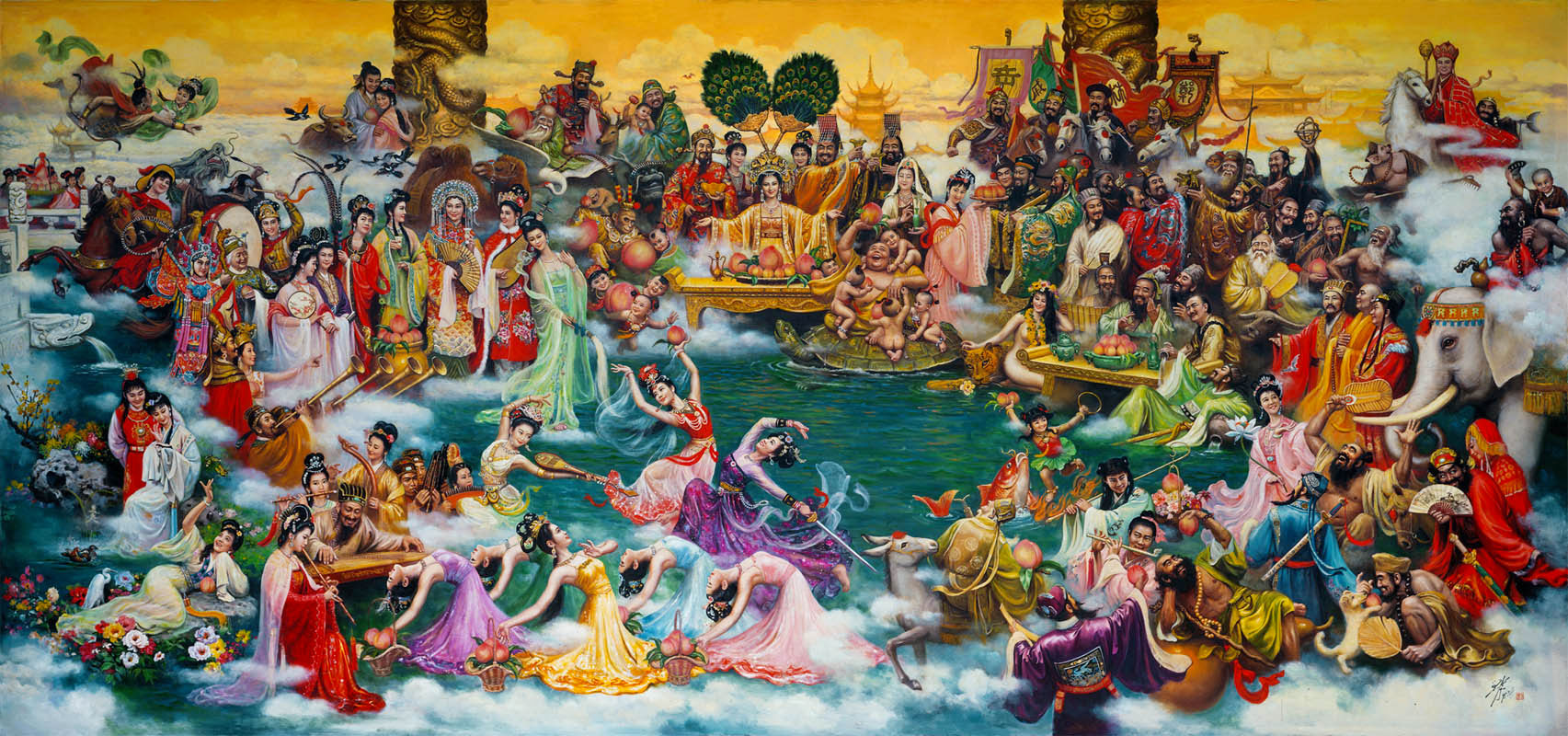Japan Folklore: Tennin
Tennin

Photo credits: google.it
The roots of Buddhism in Japan are very deep and follow the history of the country itself, thus evolving together with it. In fact, Japanese Buddhism largely consists of the continuation or evolution of ancient schools of Chinese Buddhism. Some of these schools, now no longer existing in their country of origin, once introduced into the Japanese archipelago continued to live and change.
Furthermore, through these religious relations, Chinese writing and culture were also introduced in the country representing the base of the proper History of Japan (6th century). Buddhist monks will retain the position of the most important intermediary and interpreters of the continental culture in Japan for a long time.
Celestial Beings
When we refer to Buddhism, we are immediately led to think of Buddha. In reality, there are other very important figures that accompany the Buddha and who live in the Buddhist paradise with him. Among these figures we find the Tennin, that are the result of a long process of assimilation and transformation.
Tennin , whose name is made up of the kanji 天 which means sky and 人 person, are literally “celestial creatures”, spiritual beings. They include the HITEN 飛天, Flying Beings, the UCHUU KUYOU BOSATSU 雲中供養菩薩, Bosatsu on Clouds, the TENNYO
天女,Celestial Maidens, the TENNOTSUKAI 天の使い, heavenly messengers, and the KARYŌBINGA 迦陵頻伽, who are Celestial Assistants that appear in many forms but that usually possess the body of a bird and the head of a Bodhisattva.

Photo credits: google.it
They are not specially worshiped, although people do accord them some veneration by placing flowers, water, and rice at their feet. Their function is to protect Buddhist law by serving the DEVA, or else, the TENBU group, that includes other divinely spiritual beings, and creatures like the Dragon, the bird-man Karura, plus Celestial Nymphs and Heavenly Musicians among them.
Most originated in the ancient Vedic traditions of India. The Sanskrit word used to refer to this celestial beings is Apsara, often represented as divine beauties and dancers who populated Lord Indra’s court in Indian mythology. In Japan the Apsaras take the name of TENNIN.
In the arts, they frequently appear as dancers and musicians adorning statues, paintings and temples in China, Japan and Southeast Asia. Their attributes are not clearly specified in Buddhist texts and therefore their appearance is quite varied. In Japan, they are often shown standing or sitting on clouds or flying in the air in graceful poses. They are often shown playing musical instruments or scattering flowers to give praise to the gods, and usually wear light and floating celestial garments, embellished with scarves of gauze, the Tenne.
Share this:
- Click to share on Facebook (Opens in new window)
- Click to share on Twitter (Opens in new window)
- Click to share on Tumblr (Opens in new window)
- Click to share on Pinterest (Opens in new window)
- Click to share on Telegram (Opens in new window)
- Click to share on WhatsApp (Opens in new window)
- Click to share on Reddit (Opens in new window)
- Click to print (Opens in new window)






